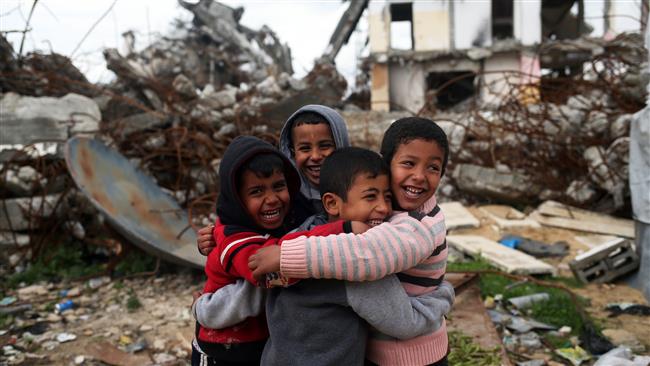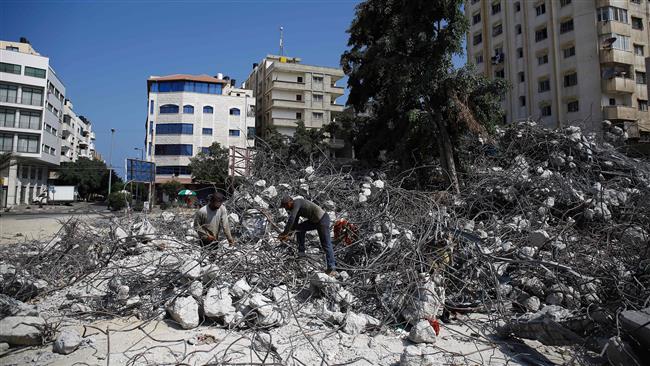Half of Gaza homes destroyed in Israeli war still in ruins: Rights group


About half of the buildings demolished during Israel’s deadly 2014 onslaught on the blockaded Gaza Strip are still awaiting reconstruction, a campaign group says.
In a statement released on Saturday, Jamal al-Khudari, head of the Popular Committee Against Siege, said rebuilding Gaza has been hampered by severe restrictions on the entry of materials due to the devastating Israeli siege on the coastal enclave.
Some donor countries have failed to fulfill their pledges to contribute to the Gaza reconstruction, Khudari noted, calling on those states to meet their commitments and help end the “disastrous and tragic” situation in Gaza.
Israel has waged three wars on Gaza since 2008, including the 2014 offensive, which left more than 2,200 Palestinians dead and over 11,100 others injured.
The latest aggression against Gaza started in early July 2014 and ended after 50 days on August 26 that year, with a truce that took effect after indirect negotiations in the Egyptian capital, Cairo.

Palestinian boys pose for a picture next to the debris of a building destroyed during the 2014 Israeli offensive in the Gaza city of Beit Hanun, January 25, 2016. ©AFP
Elsewhere in his remarks, Khudari urged Norway and Egypt, among supporters of the Gaza truce, as well as the rest of the international community to pressure the Tel Aviv regime to lift its siege on Gaza.
“The owners of thousands of destroyed houses are still living under exceptional circumstances and extreme suffering. Some are living in caravans and some in rented apartments away from their families, with no stability,” he said.
Back in March, the World Bank said only $1.409 billion, some 40 percent of the total pledged aid for the Gaza reconstruction, has been received while donor countries are yet to deliver the remaining $3.507 billion.
A survey by the Office of the UN High Commissioner for Human Rights (OHCHR) in April also found that up to 75,000 Palestinians remained homeless in the blockaded coastal sliver while many families were living in shelter condition.
Over 80 percent of the families in Gaza had borrowed money over the past year to survive, with 85 percent buying food on credit, and as many as 40 percent decreasing their consumption of food, the survey further said.
The Gaza Strip has been under an Israeli siege since June 2007. The blockade has caused a decline in living standards as well as unprecedented levels of unemployment and unrelenting poverty.




